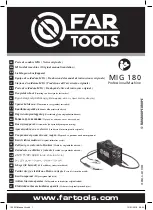
X-Array™ Loudspeaker Systems
dishes) are located on the top. When one enclo-
sure is stacked or lowered on top of another, the
male feet on the bottom of the upper enclosure
slide into the female feet on the top of the lower
enclosure, automatically aligning the enclosures.
If the enclosures do not self align, a light side-
ways push is all that is needed to make the feet
engage and align. These features allow fast
assembly and disassembly of large loudspeaker
arrays in touring applications.
1.3 Rigging Hinge Details
Xrhg Grid Hinge: Two Xrhg grid hinges are used
to attach the back of an X-Array™ enclosure to
the back of an X-Array™-compatible grid. (See
section
1.5 Grid Details for a discussion of the
grid.) Each grid hinge consists of two precision-
machined steel bases connected by an alloy-steel
chain, as shown in
Figure 4a
. Each grid-hinge
base has a locking pin which locks the hinge in
place horizontally in the track on the grid or
X-Array™ enclosure. (See section
3. Rigging-
Strength Ratings, Safety Factors and Special
Considerations for a detailed discussion of the
structural strength of the grid hinges.)
The Xrhg grid rigging hinges need not be installed
in the top enclosure and the grid simultaneously.
The length of chain allows the grid hinges to be
installed in the grid first. The grid can then be
floated above the top enclosure while the other
ends of the grid hinges are installed in the track
at the rear of the enclosures. The grid hinges
must be used in pairs and must be installed with
the chain near the ends of the track, as shown in
Figure 5a
. (Note: If one grid hinge is installed in-
correctly with the chain at the center of the track,
the second grid hinge will not fit into the track cut-
out.) Key dimensions for the Xrhg grid hinges and
the enclosure are presented in
Figures 4a
and
5a.
To install an Xrhg grid hinge into the track of an
enclosure, grasp one of the hinge bases and
firmly insert the hinge base into the long center
cutout in the track, pressing in until the spring-
loaded locking pin is fully retracted. Then apply
pressure to slide the hinge base sideways to-
wards the end of the track until the spring-loaded
locking pin drops into the hinge-locking-pin hole in
the base of the track. Once the locking pin is fully
engaged, the grid hinge base will be immovable
in the track. ALWAYS CHECK TO MAKE SURE
THE GRID-HINGE BASES ARE SECURELY
LOCKED INTO THE TRACK, AND THAT THE
LOCKING PINS ARE FULLY ENGAGED IN THE
TRACK BEFORE LIFTING ANY LOUDSPEAKER
ENCLOSURES OVERHEAD. Use the same tech-
nique for installing the other end of the Xrhg grid
hinge in the track at the rear of the grid.
To remove the Xrhg grid hinge, grasp the locking-
pin knob and pull out while applying pressure on
the hinge to slide the hinge base toward the long
cutout at the center of the track. The hinge base
FIGURE 3a - ENCLOSURE REAR RIGGING TRACK
HOLE FOR RIGGING
HINGE LOCKING PIN
CUTOUT FOR LOCKING
DOUBLE-STUD FITTING
FIGURE 3 - ENCLOSURE RIGGING HARDWARE DETAIL
FIGURE 3b - ENCLOSURE FRONT RIGGING TRACK
79.0 mm
(3.11 in.) TYP.
25.4 mm
(1.00 in.) TYP.
CUTOUT FOR INSERTING
RIGGING HINGES AND
DOUBLE-STUD FITTINGS
48.0 mm
(1.89 in.)
page 5










































